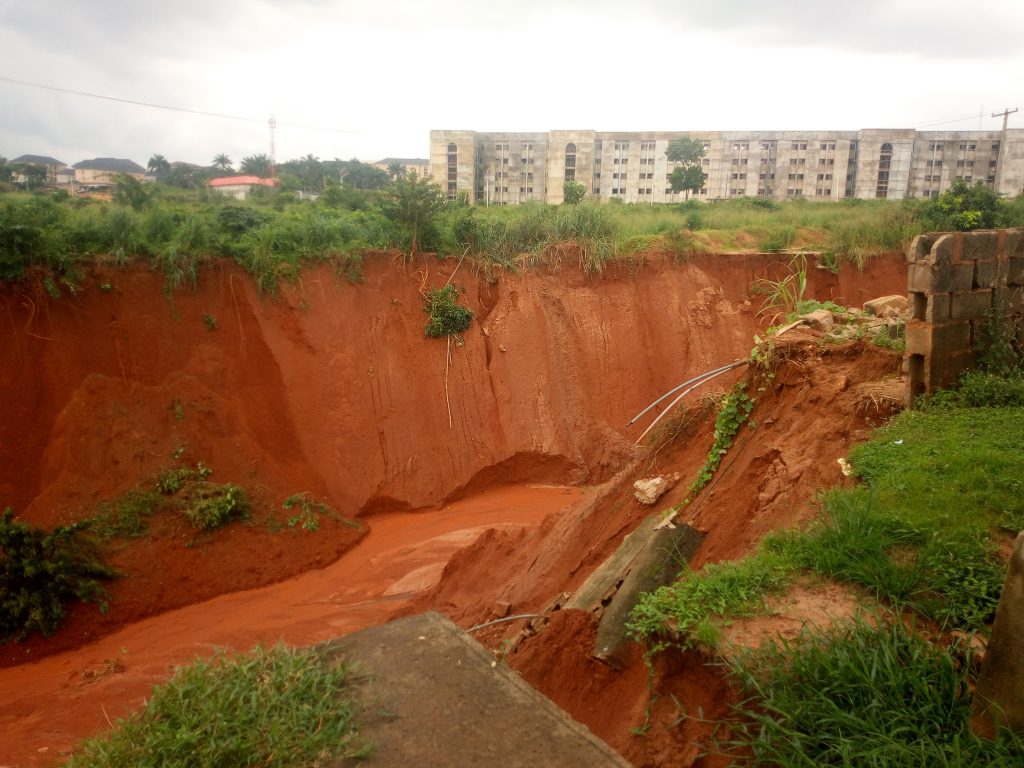One of the high points of Governor Chukwuma Soludo’s inaugural address talked about how to grapple with the existential threats posed by environmental disaster in the state.
Governor Soludo stressed that his government will aggressively tackle “existential threats posed by the environment towards a clean, green, planned and sustainable cities, communities, and markets”.
Environmental control is a capital intensive project that gulps a large chunk in the yearly budgets. The largely unchecked erosion menace in Anambra State has triggered monumental ravages which displace people from their ancestral homes.
The first civilian Governor of Anambra State, Dr Chukwuemeka Ezeife, in 1992 recognized the danger of not according top priority to environmental degradation prompting him to set up a committee called “Anambra State Erosion Control Authority [ASECA], headed by renowned Geological Scientist from Nnamdi Azikiwe University, Awka, Professor Boniface Igboka. ASENCA was given wide range powers to control the myriads of environmental disasters facing Anambra State permanently.
Professor Egboka and his team of experts visited all the erosion, gully, and landslide sites in Anambra State and produced a book which was to be a reference material for succeeding administrations to cage the menace.
Unfortunately, due to military intervention, Governor Ezeife’s roadmap on erosion and landslide control was not executed. The succeeding military administrator was not keen in making use of the reference book.
The fact remains that if this well researched work on environmental degradation by the renowned geologist was put into use, the issue of environmental degradation would have been significantly minimized as it would have lessened reports of people being displaced from their homes and environment.
Governor Soludo’s concerns about environmental issues in many parts of the State call for the retrieval of the seminal document. That is the essence of government being a continuum.
In the Foreword to the seminal book on erosion and landslide control, Governor Ezeife contended that “long before Nigeria became independent in 1960, Nanka, a town in today’s Anambra State, had become well-known for erosion, gullies and landslides”.
“The Nigeria Civil War forced the Igbo people to think home and commence building in their homelands. The resulting mass structures naturally upset the geological balance and ignited the wrath of nature into ferocious massive flooding triggering landslide and gullies that swept homesteads and farmlands”.
It is unfortunate that several government-backed enlightening programmes advocating planting of bamboo trees and grasses which have the potential to wage devastating flood water are neither followed up nor adhered to by the people. The characteristic trend is large scale soil leaching and river siltation due to blocking of water channels by dumping of refuse inside gutters in urban centres.
Erosion and flood have so terrorized Anambra peoples to the extent that some of the badly affected communities attributed the apparently intractable menace to the anger of the spirits against people for undisclosed reasons.
However, Professor Egboka deconstructed the belief saying: “The classical explanation of erosion is the ability of the denudating agents of the environment through wind, water, man, etc, to loosen, wear away, dislodge, transport, and deposit soil materials from one location to another”.
Written by POLYCARP ONWUBIKO





Comments are closed for this post.